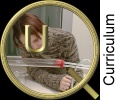 > ACCENT en > UQ 2 Mar 07 Urban air > C: Information for teachers > Classes Part B
> ACCENT en > UQ 2 Mar 07 Urban air > C: Information for teachers > Classes Part B
|
Part B: Sources and sinks, distribution and cyclesIn the texts and tasks in part B we emphasize that compounds enter our environment but also leave it again. Requirements: |
|
Approach Discuss gases and matter in air. Where do they come from, how do they spread and how are they removed again from the air? Integration of the material in this edition: The material can be used in the context of "life in a town" or "urbanisation" and respective impacts on the people. It can also be used in the context of "wind and weather". You may in particular focus on the topic sources and sinks (formation and deposition of particles). Objectives Part B introduces in simple consideration the complexity of environmental impacts. It promotes thinking processes in which the pupils bring several factors together and complement several levels to a complete image.
|
